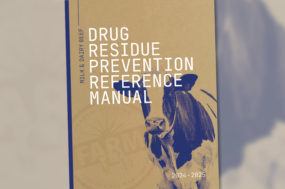At the beginning of 2008, Progressive Dairyman reported that a major flood destroyed farms and towns in southwestern Washington. The combination of rain, warmer temperatures and melting snow in the mountains caused rivers to flood their banks and spill enough water to close I-5 for many days, which cost the state of Washington millions in revenue each day.
Many dairy farmers and crop farmers were left with thousands of hours of cleanup; their source of livelihood covered with debris and mud. In response, local, state and national organizations and governments came to their aid.
“Between the Washington State Dairy Federation (WSDF) , Farm Bureau and eventual state and eventual federal response, I can’t be anything but pleased,” says Jay Gordon, executive director of the WSDF. “We had a huge outpouring of support. We had good support from the state. We finally had good support from Senator Murray ’s office and from Congress. It was a huge outpouring of response by private individuals. It was staggering. It wasn’t enough, but it was superb.
“It was heart-warming to see the efforts of the other farmers to help. I know there were animals [and services] we never heard about, but all and all it was just a wonderful outreach effort.”
At the end of October, the WSDF had received more than 250 donations from individuals and groups in at least seven different states. The Snohomish County Dairywomen gave the first and last donations to the organization. WSDF received a total of nearly $163,000 in cash donations. They also received more than 250 tons of hay and 180 dairy animals.
The state added, through the Lewis County Conservation District (LCCD) , assistance to 88 different farmers/landowners under the Emergency Conservation Program (ECP), which had funds allocated by the state, and 54 others not included in the ECP. In the first year of their assistance, the LCCD helped in recovery, removal and repairs that amounted to more than $768,000.
Even with that effort, it wasn’t enough for some of the dairy producers, who gathered what they had left and put dairying in their past.
“The sad part is we lost several of the farms that struggled to make it through,” Gordon says. “They were too wounded.
Three or four farmers decided early on, not to get back in, and a few are still trying to get up and running.”
One farmer, Gordon says, has cows being milked on other dairies because he is building a new parlor and should be milking cows on his dairy soon. Some farmers were so highly leverage and had so little equity that they didn’t have much choice but to leave the industry.
Gordon explained the plight of one farmer and his family living in a borrowed mobile home, trying to rebuild their home, who looked at the prices last winter and had to make a tough decision.
“You understand that they looked around and said, ‘Honey, what the heck are we doing this for?’” Gordon says. “I mean everybody’s asked that, but here you have a family that’s been through a flood, they’re struggling to get back on their feet and are slapped in the faces with the prices we’ve had. I don’t blame them one bit for looking at CWT and saying, ‘It’s time to call it quits.’ It’s been a tough 10 months, let alone trying to recover after a flood with these prices. Anybody that’s been through [these prices] and still in business is well ... stunning.”
Washington is known for rain, and in the beginning of 2009, another flood hit southwestern Washington, but it had a much
smaller impact. Additional assistance was given to help those affected. Many groups are trying to lobby for flood control dams to prevent future flooding. Gordon says that it’s still a long ways out, especially when “dam” is a four letter word to many environmentalists.
“If we can use these floods, and this rainfall that doesn’t seem to quit, as an opportunity to build some flood control dams to give us some tools to manage this water, and not only for floods but also so we can release it during the summer for fish and for farmers and generate a little green power, then there will be a little silver lining to all of this,” Gordon says. PD
References omitted but are available upon request at editor@progressivedairy.com



